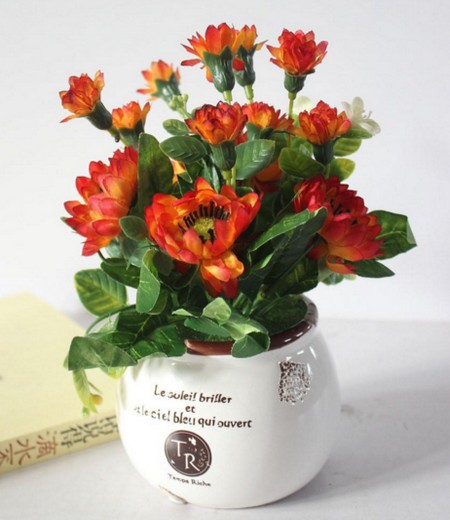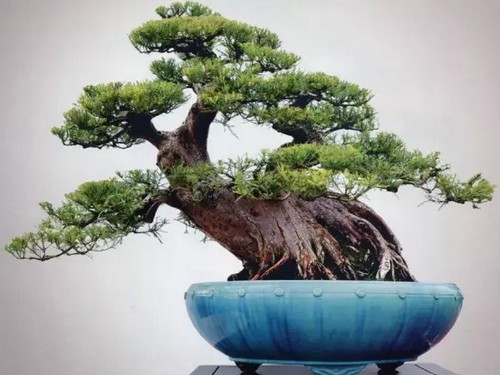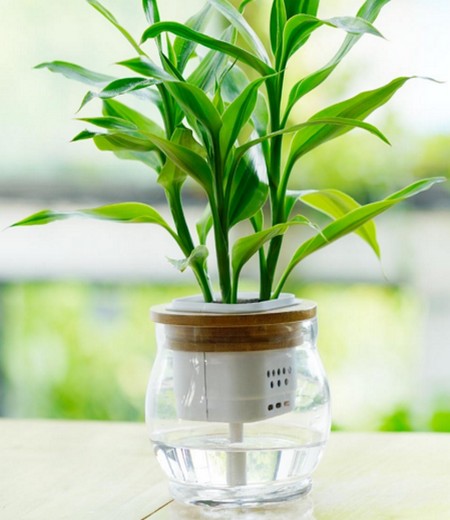Planting methods of potted carnations
Carnation, also known as carnation, is a perennial herb of the Carnation family. Its flower color is delicate and fragrant, and its florescence is long. It is an important cut flower plant in the world and is widely cultivated all over the world. Today, the editor recommends the following planting techniques:

1. Soil: clayey soil that requires good drainage, rich humus, good fertilizer retention and slightly alkaline. Carnation prefers soil with good performance of fertilizer conservation, ventilation and drainage, among which heavy loam is better. The soil pH value suitable for its growth is 5.6-6.4. Some soil analysis experiments show that when the pH value is in the range of 5.95-7.9, the content of soil organic matter has no obvious effect on flowering, which is mainly determined by soil texture.
2. Illumination: sunshine plants in the genus Carnation, like plenty of sunshine. Except for seedling stage and full flowering stage, there is no need to worry about the harm of strong light, and with the help of auxiliary light, the diameter of Corolla and the freshness of flower color can be increased. There was a significant positive correlation between light intensity and cut flower yield per unit area. A preference for bright lights is an important feature of carnations. Whether indoor, potted over summer or greenhouse to promote cultivation, all need sufficient light, should be placed in the sunny position of direct light.
Temperature: carnations like cool, can not bear the heat, can bear a certain degree of low temperature. If the summer temperature is higher than 35 ℃ and the winter temperature is lower than 9 ℃, the growth is very slow or even stops. In the period of high temperature in summer, corresponding cooling measures should be taken, and plastic film or enter the greenhouse should be covered in winter to maintain the appropriate temperature.
2. Watering: the root system of carnation is whisker root, long-term stagnant water or high humidity in soil or medium and long-term high temperature on leaf surface are not conducive to its normal growth and development. Therefore, drip irrigation is advocated, and attention should be paid to water quality and water salt content. Carnations grow strongly and are more resistant to drought. In rainy and wet areas, the soil is easy to harden and the root system develops abnormally due to poor ventilation, so attention should be paid to loosening the soil and drainage in the rainy season. Except for timely watering during the growing and blooming season. Usually less watering, in order to keep the soil moist. The air wettability should be kept at about 75%, and proper spraying of water before flowering can prevent the bud from cracking in advance.
3. Fertilization: carnations like fertilizer, apply sufficient amount of baking fertilizer and bone meal before planting, and apply liquid fertilizer continuously during the growing period, generally applying mature thin fertilizer and water every 10 days or so, and applying topdressing after flower picking. Potted carnations should choose a high tube basin with larger inner diameter, and the base fertilizer containing potassium, calcium, nitrogen and phosphorus should be applied to the bottom of the basin first. During the growth period, dilute urea water, bone meal or sauce residue fertilizer were applied alternately every half a month. It is worth noting that carnations are not suitable for thick fertilizer.
4. Coring: in order to promote the multi-branch and multi-flowering of the carnation, it is necessary to pick the heart many times from the seedling stage: when the seedlings grow 8-9 pairs of leaves, carry out the first coring and retain 4-6 pairs of leaves; when the lateral branches grow more than 4 pairs of leaves, the second time, keep 4 pairs of leaves on each side branch, and finally make the whole plant have 12-15 lateral branches. There is only one bud at the top of each side branch during bud pregnancy, and the budding buds and lateral branches in the axils below the top should be removed in time. Cut off the peduncle in time after the first flowering, leaving only two buds at the base of each branch. After picking the heart again and again, it can make the plant shape beautiful and the flowers colorful.
Time: 2019-05-25 Click:
- Prev

Cultivation of Pinus glyptostroboides potted landscape
Glyptostrobus glyptostrobus is known as a living fossil plant, cedar family glyptostrobus deciduous or semi-deciduous trees, this genus is only one species, is the world's remaining plants, endemic to China, is a national first-class precious species, with the world's only. In 2006, it was selected by the State Post Bureau as a stamp of "Remnant Plants" and became a national famous brand.
- Next

Planting method of Fugui Bamboo
If the rich bamboo is used as a commercial ornamental, the cultivation height should be 80cm to 100cm. It is mostly cultivated in the garden, like shade and damp, with thick stems and leaves. Its varieties are green leaves, green leaves with white edges (called silver edges), green leaves with yellow edges (called Phnom Penh) and green leaves with silver hearts (called silver hearts). They are mainly used as potted ornamental plants, and the stems and nodes look like bamboo but not bamboo.
Related
- Fuxing push coffee new agricultural production and marketing class: lack of small-scale processing plants
- Jujube rice field leisure farm deep ploughing Yilan for five years to create a space for organic food and play
- Nongyu Farm-A trial of organic papaya for brave women with advanced technology
- Four points for attention in the prevention and control of diseases and insect pests of edible fungi
- How to add nutrient solution to Edible Fungi
- Is there any good way to control edible fungus mites?
- Open Inoculation Technology of Edible Fungi
- Is there any clever way to use fertilizer for edible fungus in winter?
- What agents are used to kill the pathogens of edible fungi in the mushroom shed?
- Rapid drying of Edible Fungi

